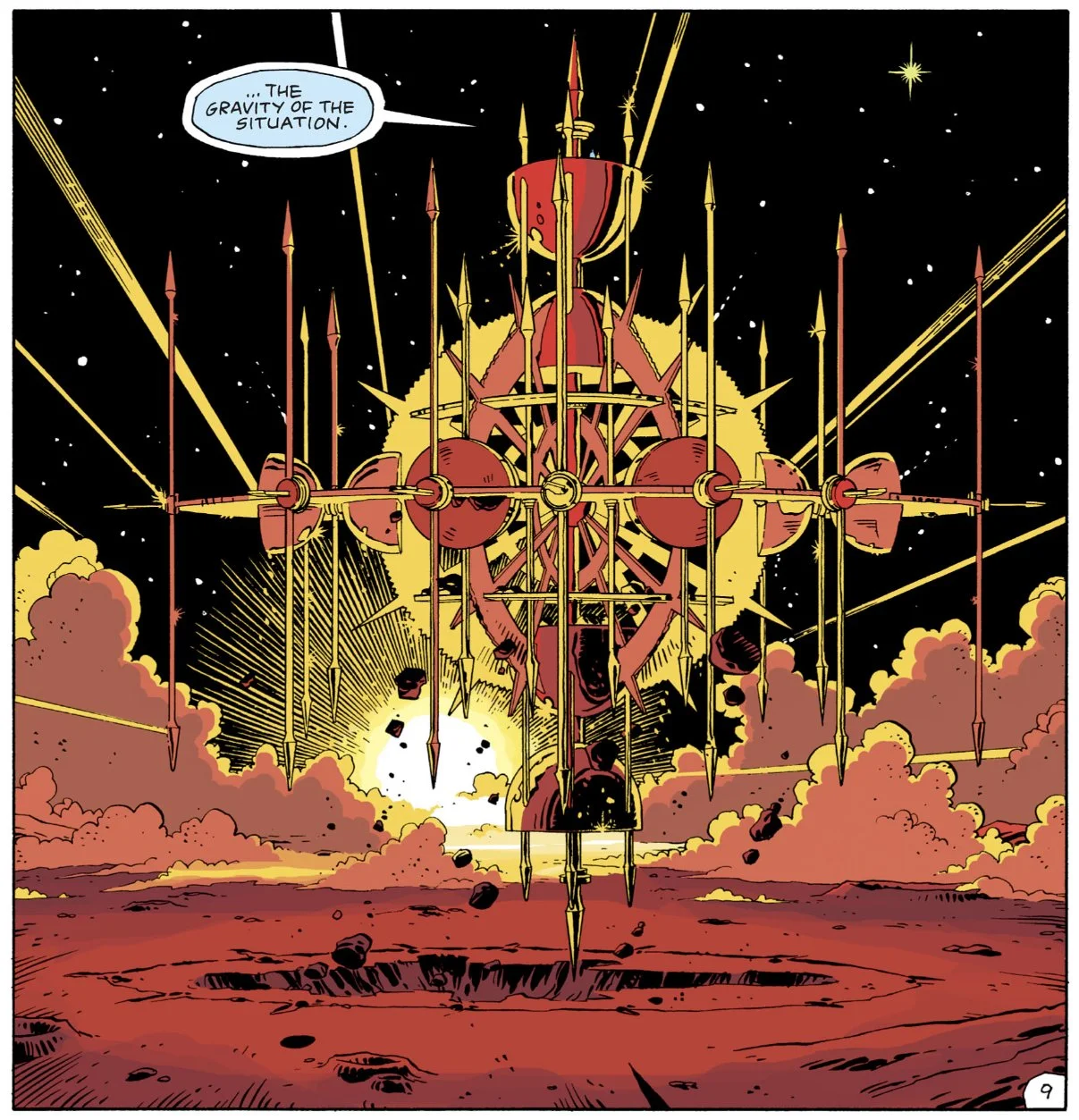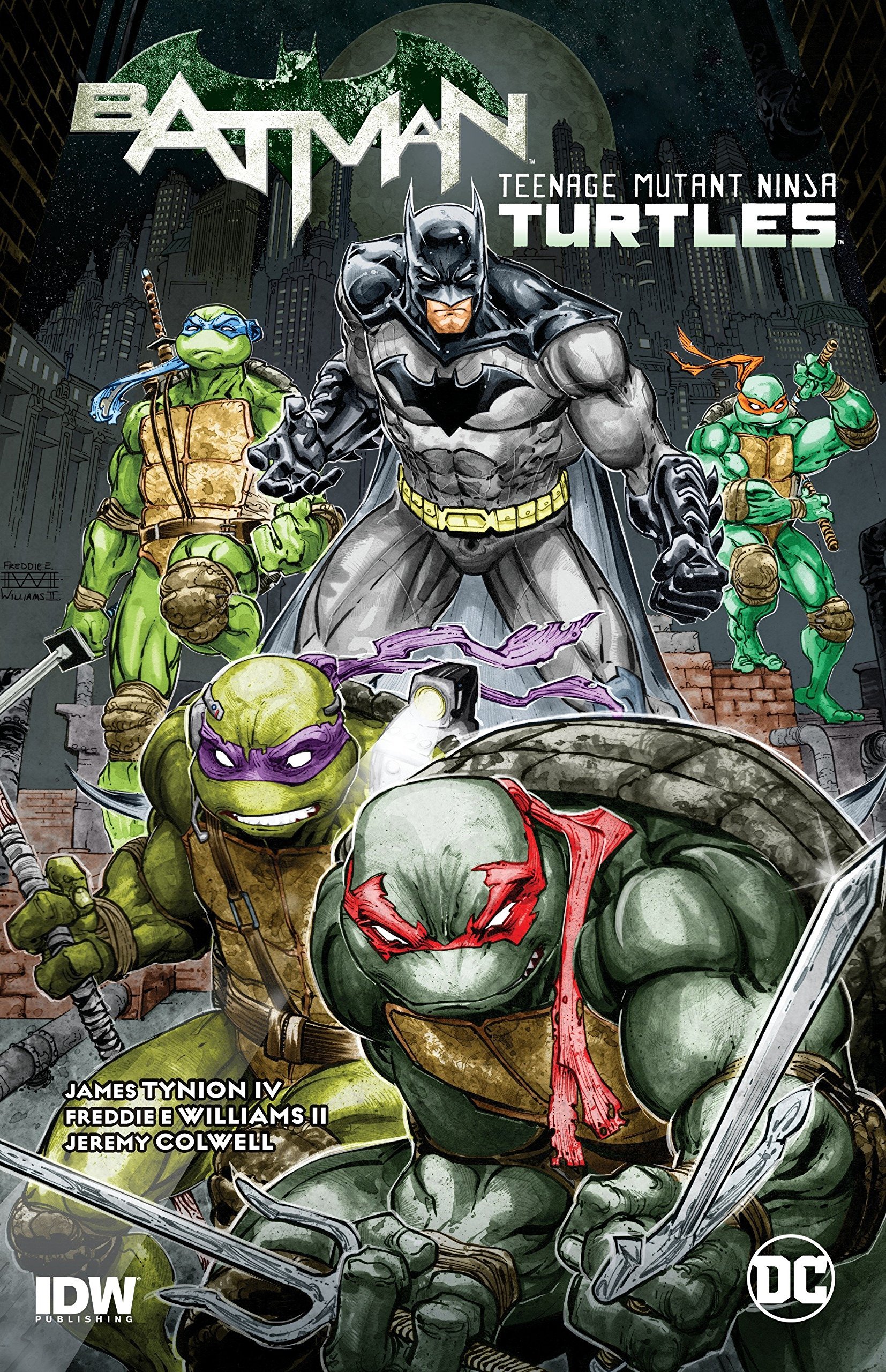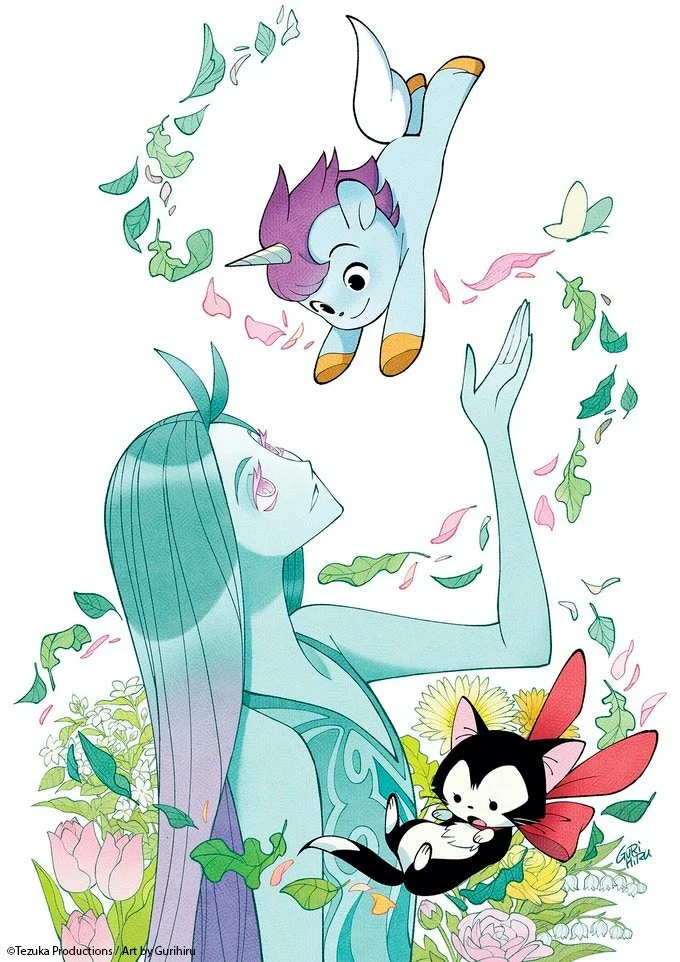Man Without Fear...By The Year: Daredevil Comics in 1991
By Bruno Savill De Jong — It’s 1991. The Gulf War comes to an end, Apartheid is dismantled in South Africa, serial killer Jeffrey Dahmer is caught, and the socialist Soviet Union is dissolved after 69 years officially ending the Cold War. People are listening to “Smells Like Teen Spirit,” watching Silence of the Lambs and reading Daredevil.
Written by Ann Nocenti (288-291), D. G. Chichester (292-300)
Illustrated by Lee Weeks (288, 292-295, 297-300), Kieron Dwyer (289-291), Ron Garney (296)
Inks by Al Williamson (288-289, 293-300), Lee Weeks (288), Fred Fredericks (289-292)
Colors by Mike Rockwitz (288), Nel Yomtov (288), Max Scheele (289, 291-300), Steve Buccellato (290)
Lettered by Jack Morelli (288-290, 292-299), Brad Joyce (288), Joe Rosen (291, 300)
The year of 1991 – more so than 1990 itself – was a year of endings and new beginnings. South African Apartheid and the Soviet Union were both officially dissolved this year. Nirvana’s “Smells Like Teen Spirit” became an unexpected sensation that propelling the band into mainstream success and ushered in the ironic 90s cynicism of grunge. Plus, 1991 was the year of X-Men #1, the end of Claremont’s long run on the title which remains the best-selling comic issue of all time. Jim Lee’s superstar artwork was also indicative of the “Age of Image,” where comic illustrators outshone their storytellers, and Lee and several other prominent artists met up in December 1991 to discuss the formation of Image Comics. Amongst this was the end of Ann Nocenti’s run on Daredevil, which closed out with a resurrection of the past.
When we left Matt Murdock, he was an amnesiac boxer calling himself “Jack Murdock,” while Bullseye was pretending to be Daredevil and ruining his reputation on the streets. The pieces are there, but they are misaligned, and “Jack” has recurring dreams of his old mentor Stick trying to teach him (and Elektra) to unburden themselves from the past instead of hiding from it. Or as “Jack” tells his new lover Nyla, “something about re-living my beginnings, so I can get on to the next thing.”
The Kingpin has caught wind of this “Jack Murdock.” He plans to dismantle Matt through reviving the past to completion, making him take the dive his father refused to (by kidnapping Nyla) to short-circuit his mind. However, this kind of reconstructed history is exactly what Matt needed to reboot his brain, reexperiencing his father’s inspirational conviction from both the inside and out – in a delightfully trippy out-of-body experience, where “Jack” sees himself as his own son – and letting Matt be “reborn,” stronger than ever, out of the endeavour.
Daredevil’s full return is only blocked by Bullseye currently occupying his costume. Nocenti, ever interested in mixing up binaries, therefore has Matt take up Bullseye’s own costume and have the two athletic arch-enemies “switch places” in “Bullseye!” (Daredevil #290). This issue is a highlight amongst the two’s encounters, Kieron Dwyer fantastically showcasing them dancing across the rooftops as Matt dons the giggling sadistic identity of Bullseye, taunting “Daredevil” with all the woes he’s done to him, so that Bullseye-as-Daredevil is forced to defend “himself.” It’s a fantastic and ambiguous chapter that reiterates the push-and-pull of the Daredevil-Bullseye circular violence, with Matt forcing his own identity crisis upon someone else, who cannot handle the pressure.
This is only the penultimate issue of Nocenti’s run, though. The actual ending “All the News that Fits” (Daredevil #291) has Matt tying up (some) loose ends in his life, setting the stage for a new status quo. He leaves Nyla (as she only fell for his memoryless-self), restores his sullied reputation on the streets, and renews his vow to dismantle the Kingpin. Kingpin himself has tried to update his reputation, “purchasing” a healthy public image and impressive lineage – including a membership to Skull And Bones – whilst shoring up such PR control by purchasing his own media conglomerate, Fisk Media.
So, Nocenti does not resolve everything (which would be atypical for any superhero story), but does generously pave the groundwork for a new writer to take over. Daredevil has a renewed purpose and a healthier mind, and the final images are the long-awaited reunion with Foggy Nelson. The sweet reunion promises a return to “the good ol’ days” and reaches towards a pre-Born Again status, recalling the last time the two rejoined as partners in 1976’s Daredevil #130.
Daredevil’s main adversary in this issue is Nocenti’s creation Bullet, whom Daredevil fights to secure evidence of illegal housing permissions for Ben Urich, securing his bona fides as a man of the people. It’s a focused tale of perseverance and morality which encapsulates all that Daredevil supposedly represents. Although Nocenti leaves the story with a hint of cynicism, as the Daily Bugle also edits out Urich’s story on Big Tobacco given they are a sponsor of the paper. Nocenti’s end is mostly victorious, but not every battle can be won.
Taking over from Nocenti on Daredevil was D.G. Chichester, who will work on the title for several years. His inaugural issue certainly feels like a fresh writer, as Chichester employs a more straightforward, action-orientated tone that (for now) avoids the more internal conflicts of Nocenti. The tendency towards splash page introductions and Lee Weeks' more solid, traditional house-style – compared to the unmistakable JRJR, at least – also signal this as a new era for Daredevil, faintly foreshadowing the muscular excess ‘90s comics will become infamous for.
However, Chichester also picks up discarded threads left by other writers. Nocenti’s frenzied run would often drop characters entirely, but after Karen Page ran out of Daredevil in #265, Chichester reintroduces her into Matt’s life. Karen is now operating as an anti-pornography advocate (a complex position there’s no space to unpack here), still hurt by Matt’s “affair” with Typhoid Mary. Their relationship remains fragile and icy, with Karen warning Matt off being “too fast” in reclaiming their prior status, but Chichester peppers in authentic scenes of their steady reconciliation as Matt tries to tie up loose ends.
One such end is not even from Nocenti, but reaches all the way back to Frank Miller’s original run, as Daredevil discovers that The Hand have returned. The demonic Ninjas are attempting to sow fear through human sacrifices around New York, employing villains like Taskmaster and Tombstone to carry out their bidding. Alongside the returned Hand are their counterbalance, the Chaste, whom Matt also hasn’t seen since 1982. It’s ironic that Daredevil makes a “Teenage Mutant Ninja Turtle” reference, given Peter Laird and Kevin Eastman created them in 1984 to parody comics exactly like Frank Miller’s Daredevil. Daredevil has assistance from Ghost Rider in dispensing The Hand, and frankly their appearance more reminds us of their existence than deepening any history, but it demonstrates Chichester’s interest in exploring Daredevil’s past.
A more recent example is Typhoid Mary. After leaving Daredevil for dead in Inferno, she somewhat disappeared from the title, but now is shown hanging around the Kingpin. Honestly Typhoid feels downplayed by Chichester, existing as an enthusiastic henchwoman of Kingpin instead of her unpredictable, independent sadomasochistic self. She seemingly exists to contrast Kingpin’s “true love” of Vanessa, and how far into depravity he has fallen.
Daredevil also “deals with” Typhoid in an icky way, sleeping with her to “reawaken” the gentle Mary persona inside, before his forged papers have her forcibly sectioned by a mental hospital. Of course, Typhoid Mary was an unhinged killer, but seeing the scared and confused Mary be dragged away in a straightjacket is no less uncomfortable to watch. Chichester knows this is uneasy, showing Matt crying in the bathroom about it, but this still gives more focus to Matt’s angst than the suffering and restrictions imposed upon this once untameable female character.
Taking out Typhoid Mary falls under Daredevil’s renewed efforts to topple the Kingpin, achieved through the 4-part storyline Last Rites, which also functions as a spiritual sequel to Born Again. Instead of the Kingpin destroying Matt Murdock’s life, now Daredevil does the same to Wilson Fisk. Matt – via convenient intervention from Nick Fury and S.H.I.E.L.D. – gains information about Kingpin’s new media company and its connection with the neo-Nazi terrorists HYDRA. Daredevil gathers such evidence for the Federal DA, while also spreading such info on the streets, sowing discord between HYDRA and the Kingpin which escalates to open warfare that decimates his assets and resources.
What’s most interesting about Last Rites is this drawn-out revenge makes Kingpin oddly sympathetic. Chichester is under no illusion he is a “noble soul,” as Fisk has one waiter crippled for daring to give him the cheque, but as his resources are slowly stripped away from him the Kingpin is left utterly defenceless. Without money to bribe politicians or pay high-price layers, the Kingpin has no support structure and is left totally isolated. By the end of Last Rites, he is left manically stealing from a storage unit – unable to pay the fees on his declined credit cards – for one last chance of framing Matt Murdock for murdering a cab driver (an obscure reference to Born Again’s Daredevil #226, wherein Matt was dumped into an abandoned taxi).
Last Rites peaks late – taking off in the final issue, which is also Daredevil’s 300th – and it's questionable how involved Matt really is in the Kingpin’s downfall, as tension with HYDRA was already brewing. Then again, it means Daredevil doesn’t cross any lines in his destruction, and there’s a catharsis in Last Rites that Kingpin’s downfall comes from his own arrogance. Still, this doesn’t stop Daredevil’s guilt in seeing his old enemy suffer. These complicated emotions elevate Last Rites over a simplistic triumph, questioning how much plotting an enemy defeat (instead of simply reacting against them) pushes the hero into premeditated revenge instead of objectively meting out justice. It’s not enough for Daredevil to simply conquer the Kingpin. He has to forgive him too.
While Kingpin’s penthouse offices are destroyed and he’s forced (literally) into the gutter, Matt gets new high-rise offices and has his law license reinstated. Last Rites operates like a kind of cosmic rebalance, restoring the underdog battle Matt has been fighting since Born Again. The Kingpin has all his opulence stripped from him, which flashbacks reveal were illusions he had built up from poverty. Yet ironically, Kingpin finds the same reinvigorated clarity that Matt did at the end of Born Again. Forced to become an underworld criminal again after going “legitimate,” Kingpin is made to take a dirty, hands-on approach again. As Wilson Fisk tells a former underling, “You’ve helped me realize a part of myself I thought I’d lost forever! Now I feel like a man with a second chance… a man… Born Again.”
Chichester may begin his run with restoring “justice” to the world by finally bringing down the Kingpin. But he does so with the knowledge that such comic book stories never really stop. They are all chapters in a continuous saga, where “endings” are simply opportunities for resurrection.
Read classic Daredevil Comics!
Check out past installments from The Man Without Fear…By The Year!
Check out Bruno Savill De Jong’s last regular series, Gotham Central Case by Case!
Bruno Savill De Jong is a recent undergraduate of English and freelance writer on films and comics, living in London. His infrequent comics-blog is Panels are Windows and semi-frequent Twitter is BrunoSavillDeJo.













